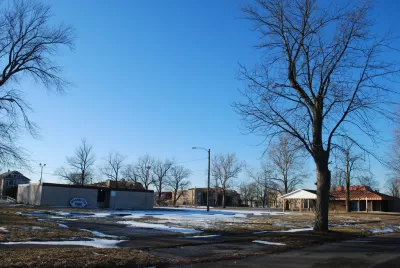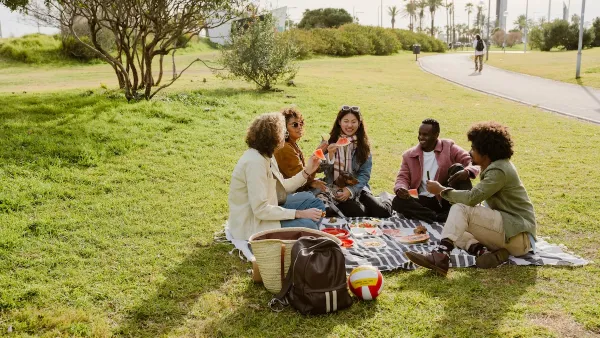With a shrinking population, Gary, Indiana is faced with the prospect of having more park space than it knows what to do with.

According to city officials, as many as 20 of Gary's 57 city parks may be allowed to revert back to their "natural state." Ed Bierschenk of The Times/NWI.com reports that Gary's Mayor and Parks Superintendent have floated the idea of reducing the number of parks maintained by the city in the face of a declining population. The Census shows that Gary's population fell below 80,000 in 2015, down from a high of over 170,000 in the 1960s and '70s.
[Parks Superintendent McKenya Dilworth] said even if some of the parks are allowed to revert to nature, it doesn't mean the land won't be maintained.
Some of the land might be used as wetland mitigation to offset impacts caused by developers. In these cases, developers would provide money to help maintain the green space, Dilworth said. Some of the money then could be combined with grant funds for such projects as removal of invasive species, she said.
The land also can be used as green infrastructure, for example, to help reduce the amount of water going into the city's stormwater system.
A parks plan is currently in development by committees made up of residents from the city's six council districts. Any plans to reduce the number of parks in the city would first need to be discussed with the city council and residents.
FULL STORY: Gary looking at letting some parks back to nature

Planetizen Federal Action Tracker
A weekly monitor of how Trump’s orders and actions are impacting planners and planning in America.

Map: Where Senate Republicans Want to Sell Your Public Lands
For public land advocates, the Senate Republicans’ proposal to sell millions of acres of public land in the West is “the biggest fight of their careers.”

Restaurant Patios Were a Pandemic Win — Why Were They so Hard to Keep?
Social distancing requirements and changes in travel patterns prompted cities to pilot new uses for street and sidewalk space. Then it got complicated.

Platform Pilsner: Vancouver Transit Agency Releases... a Beer?
TransLink will receive a portion of every sale of the four-pack.

Toronto Weighs Cheaper Transit, Parking Hikes for Major Events
Special event rates would take effect during large festivals, sports games and concerts to ‘discourage driving, manage congestion and free up space for transit.”

Berlin to Consider Car-Free Zone Larger Than Manhattan
The area bound by the 22-mile Ringbahn would still allow 12 uses of a private automobile per year per person, and several other exemptions.
Urban Design for Planners 1: Software Tools
This six-course series explores essential urban design concepts using open source software and equips planners with the tools they need to participate fully in the urban design process.
Planning for Universal Design
Learn the tools for implementing Universal Design in planning regulations.
Heyer Gruel & Associates PA
JM Goldson LLC
Custer County Colorado
City of Camden Redevelopment Agency
City of Astoria
Transportation Research & Education Center (TREC) at Portland State University
Camden Redevelopment Agency
City of Claremont
Municipality of Princeton (NJ)





























